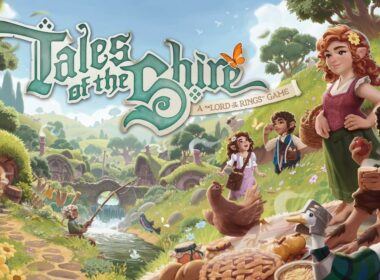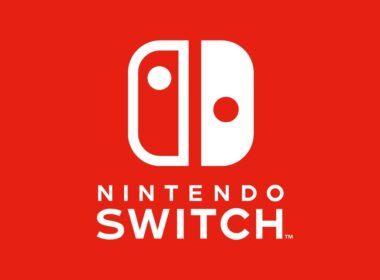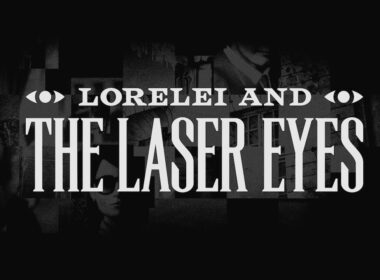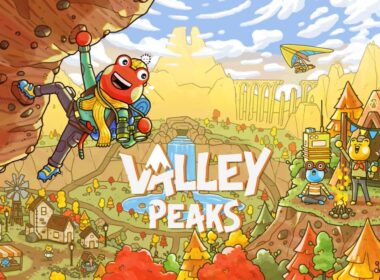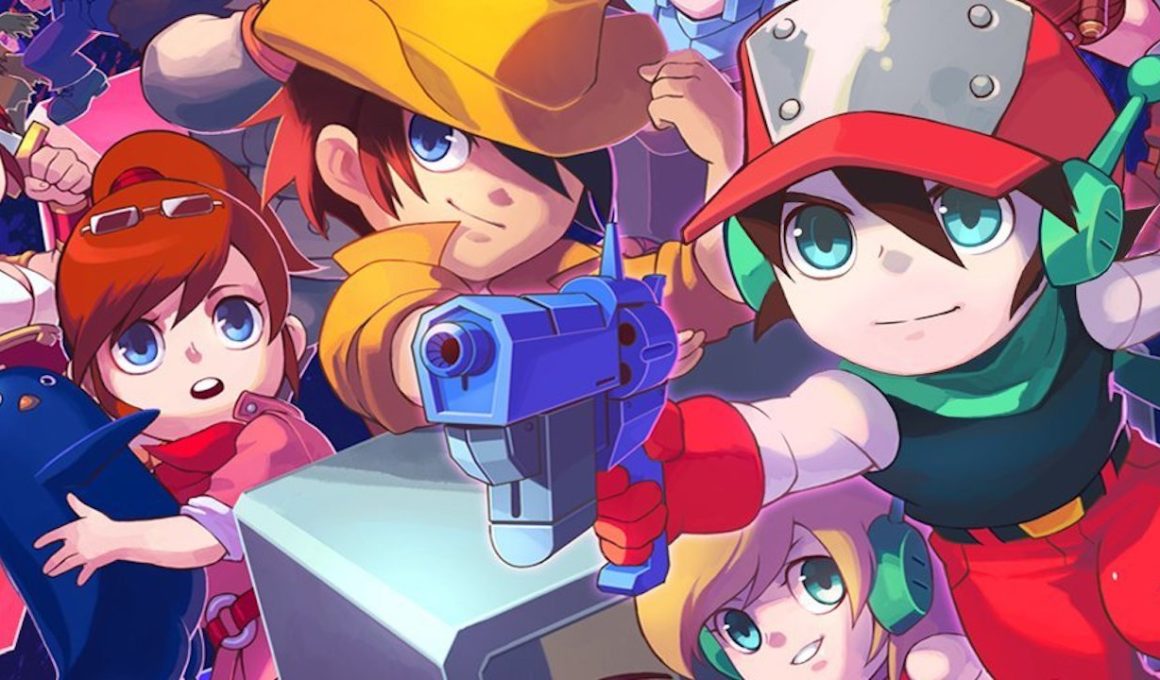The release of Super Smash Bros. Ultimate certainly made sure that we were spoilt for choice when it came to pitting some of the most iconic gaming characters ever made against one another. With that said, Nicalis has been busy clashing their own rather bizarre list of digital icons together. First off, they had indie stars such as Shovel Knight and little Issac busting bruises with characters from the likes of Cave Story+, Code of Princess EX, and Azure Striker Gunvolt for 2D fighting game, Blade Strangers. This time, Nicalis has teamed up with developer Pikii to head down another competitive crossover route with this latest color-coded puzzle fighter, Crystal Crisis. This may surely come as great news to those who are pining for a port of Super Puzzle Fighter 2 Turbo on Nintendo’s portable home console. Yet, while the underpinning mechanics are taken from the same branch of the ’90s arcade puzzler, Crystal Crisis stirs up the formula enough to call it its own.
If Capcom’s classic Super Puzzle Fighter 2 Turbo and its long list of ports happen to pass you by, then here’s a quick rundown on its hopelessly addictive system mechanics. You start off choosing a character from the selection screen to represent your tactical desires based on their own set of gem attack patterns. During gameplay, colored twin blocks (or crystals) fall from the top of a playing grid not too dissimilar to something you would find in Tetris. The idea is to then match and build clusters of the same colors together so that they link either horizontally or vertically into their resting spot. A crash gem – or in this case, a spark crystal – will also fall from the sky from time to time. Attaching the spark crystal with a matching cluster of colors will result in shattering them off your grid and forcing an attack on your opponent’s.
Setting up where to land your spark crystals and colored blocks on the screen will determine the damage and combo potential dealt to your opponent. So, for example, using a red spark crystal will clear out a group of red blocks to lead the way for a resting yellow spark crystal to fall nicely into place and clear out its own corresponding color for a much more powerful combo attack. The way this affects your opponents is in how your attack will dump a trash load of attack blocks onto their screen with a Countdown tune-timer to disrupt their strategic flow. Once the timer reaches zero, the trash turns back into normal blocks and can be used to set up combos once again. If the blocks overwhelmingly fill the player’s screen, they lose that round. The overall winner is measured in a best out of three bouts just like a traditional competitive fighting game.
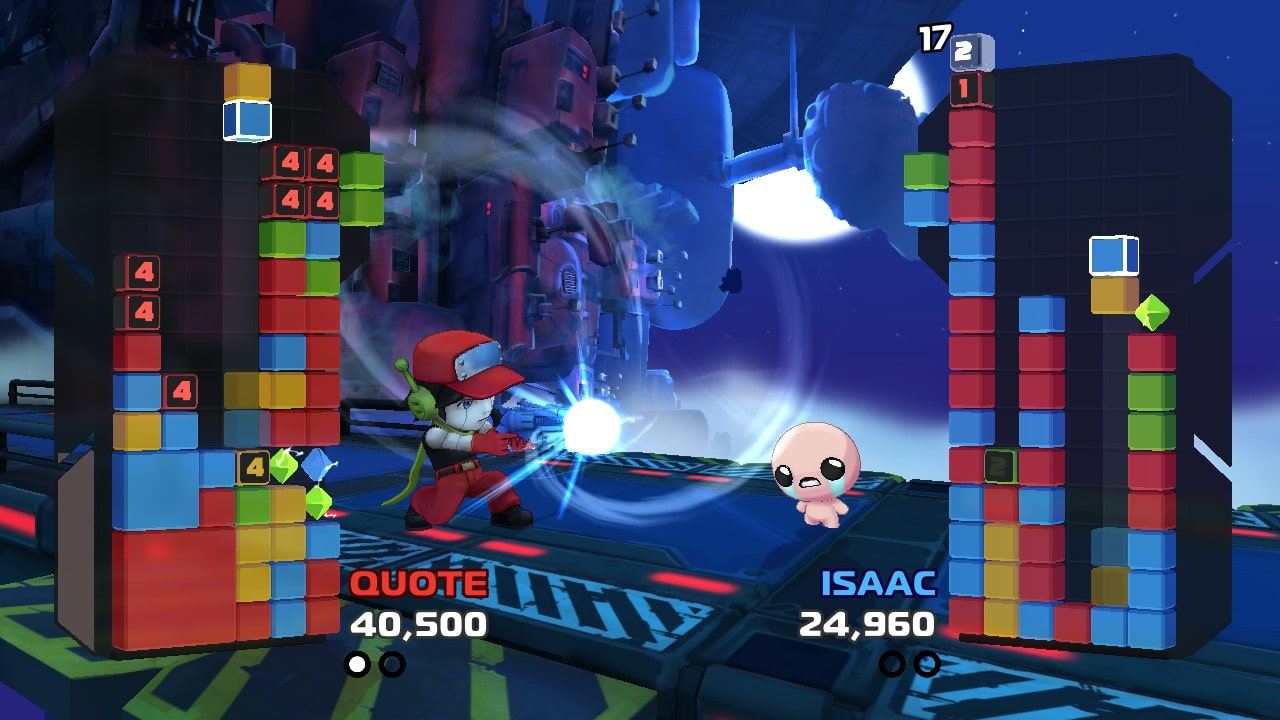
Where Crystal Crisis plays a bit differently, is in how it builds upon Super Puzzle Fighter 2 Turbo’s foundation by giving each character a super meter to build in order to turn the tables of a match. Some characters can fill three bars of meter, while others have a single, much longer bar with a greater payoff. Meter can be used both offensively and defensively depending on your situation, with the potential to lead to a killer comeback when all hope can seem lost. It’s a great little mechanic to keep things feeling tense and fresh, if sometimes a little unbalanced depending on which character you choose. Some abilities can simply seem far overpowered in comparison to others which can, unfortunately, filter the relevance of the rest of the roster.
Another game changer is having the ability to wrap falling crystals into the other side of the screen when pushed laterally outside the grid. This way, you are not always restricted to your colors staying attached together like Siamese twins. It’s a simple tweak to the formula, but one that does open up a wider strategic mindset for the player to think about. However, if you are looking for a straight up replication to the way a classic puzzle fighter works, then there are plenty of customization options to make that possible.
Speaking of customization, one of the more helpful features is the ability to change the colors of crystals in the settings menu. Seeing that I happen to be color blind, telling the difference between green and yellow crystals can be quite difficult for me to visually separate. Thankfully, there is a default color blind option as well as a custom palette option to play with if it seems a little dull on the eye. While this may not affect the majority of players, its inclusion is something I personally appreciated.
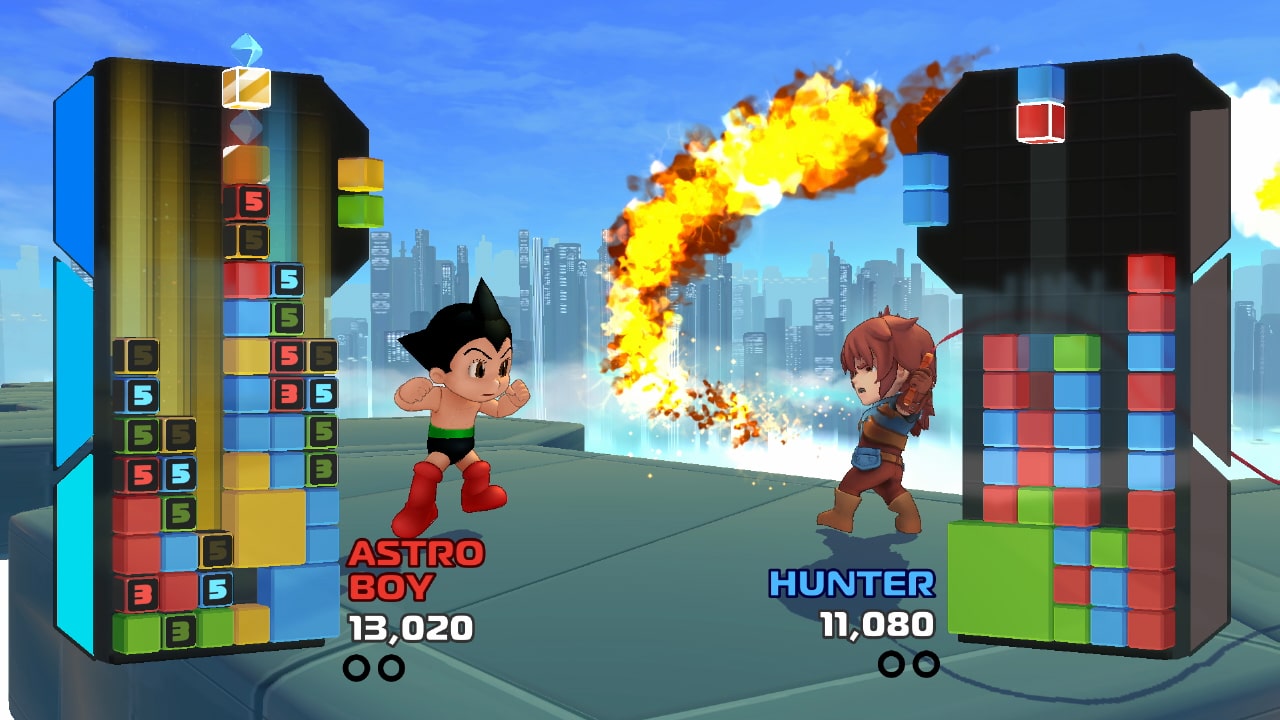
Of course, there’s always room for improvement, especially considering these color preferences cannot be changed on the fly to see a quick live comparison. But at least it’s clear that a lot of effort has been put into making sure Crystal Crisis fits the mold for each player’s needs. Another example is in how the playing grid is tilted during gameplay to give some form of cosmetic depth to its visuals. Again, I found such a stylistic choice a bit of a distraction so having the ability to straighten it to a classic 2D tile view is something that could have easily been ignored and thankfully isn’t.
Come to think of it, there’s a lot I really like and respect about Crystal Crysis. The fact that I can match up Astro Boy against odd and obscure TurboGrafx CD mascot Johnny Turbo is something even a stoner with an encyclopedia of nerd history would struggle to conjure up. There’s something bittersweet in seeing niche indie icons, reprisals of a 1950’s manga superhero and an overweight advertisement failure duke it out less than twelve months after one of the biggest interactive IP showdowns of Masahiro Sakurai string pulling. It’s another reminder that anything can be possible in the world of video games and something well worth Googling for those interested.
The biggest turn off in purchasing Crystal Crisis will probably be its digital price point at £26.99 ($29.99) – especially when considering that many puzzle games of a similar ilk these days do tend to be on the cheaper scale of the spectrum. To be fair though, considering how much is included here and the licensed IPs it represents it does make this purchase, in my eyes, good value for money. As well as an Arcade mode and a Campaign that barely makes any sense, there are plenty of unlockable extras to vary up the gameplay.
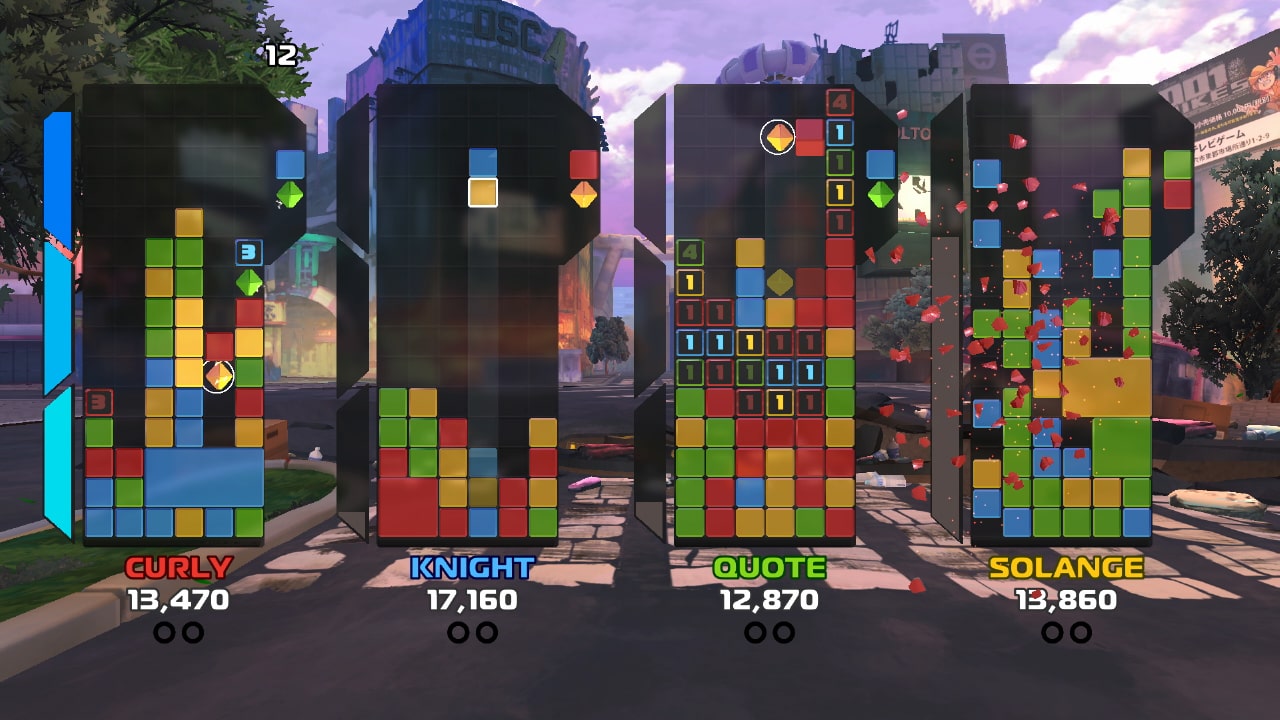
You have access to a classic match-three mode, a board-swapping tag team playstyle to mess with, as well as a memory challenge option that grays out colored blocks when rested to provide the ultimate challenge. What’s more, the art gallery that represents the decent-sized roster and stage design concept art is very well presented, along with unlockable music scores that accompany the games that each character is from. It would have been nice to see a more detailed insight of each character’s background as opposed to the short blurb snippets that merely hint at what game they are from. But, even from a quality perspective, the art in itself has been beautifully implemented even on Nintendo Switch’s small screen.
Furthermore, local multiplayer allows up to four players to enjoy same-screen competition with an online mode to show the world your puzzling prowess. Playing in multiplayer is where Crystal Crisis and similar games surely do flourish, but the CPU AI can give even the most hardened player a run for their money on the higher difficulties. As far as the gameplay visuals are concerned, I personally would have preferred a 2D style riding off the bright and flat art design used for Blade Strangers. Yet despite clearly being created under a stricter budget than most, the 3D models and stage design have plenty of character despite the eyes being fixed mostly on the action in the playing grid.
If you are looking to battle it out in a puzzle fighter on the Nintendo Switch, then you really can’t go wrong with Crystal Crysis. It may not have the top-tier gaming icons that some of the bigger crossovers contain, but the fact that it doesn’t plays nicely as part of its charm thanks to the wonderful obscurity to it all. It’s a solid puzzle game and one that can last for a long time given the circle of friends and competition that Switch owners may have. And, just as you would expect, crashing crystals on the go with a split Joy-Con at the ready is always the best way to throw down.
Version Tested: Nintendo Switch
Review copy provided by Nicalis

